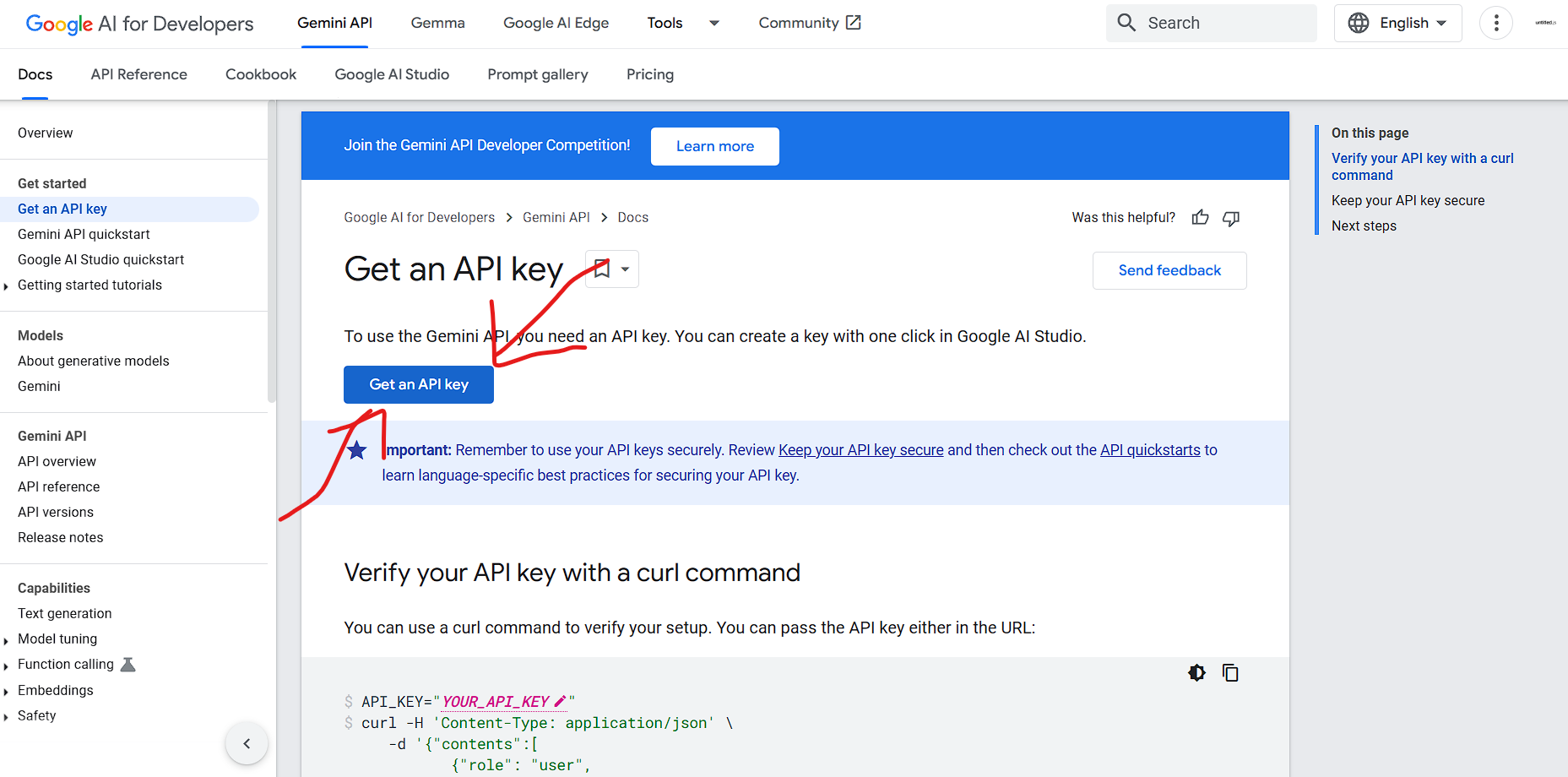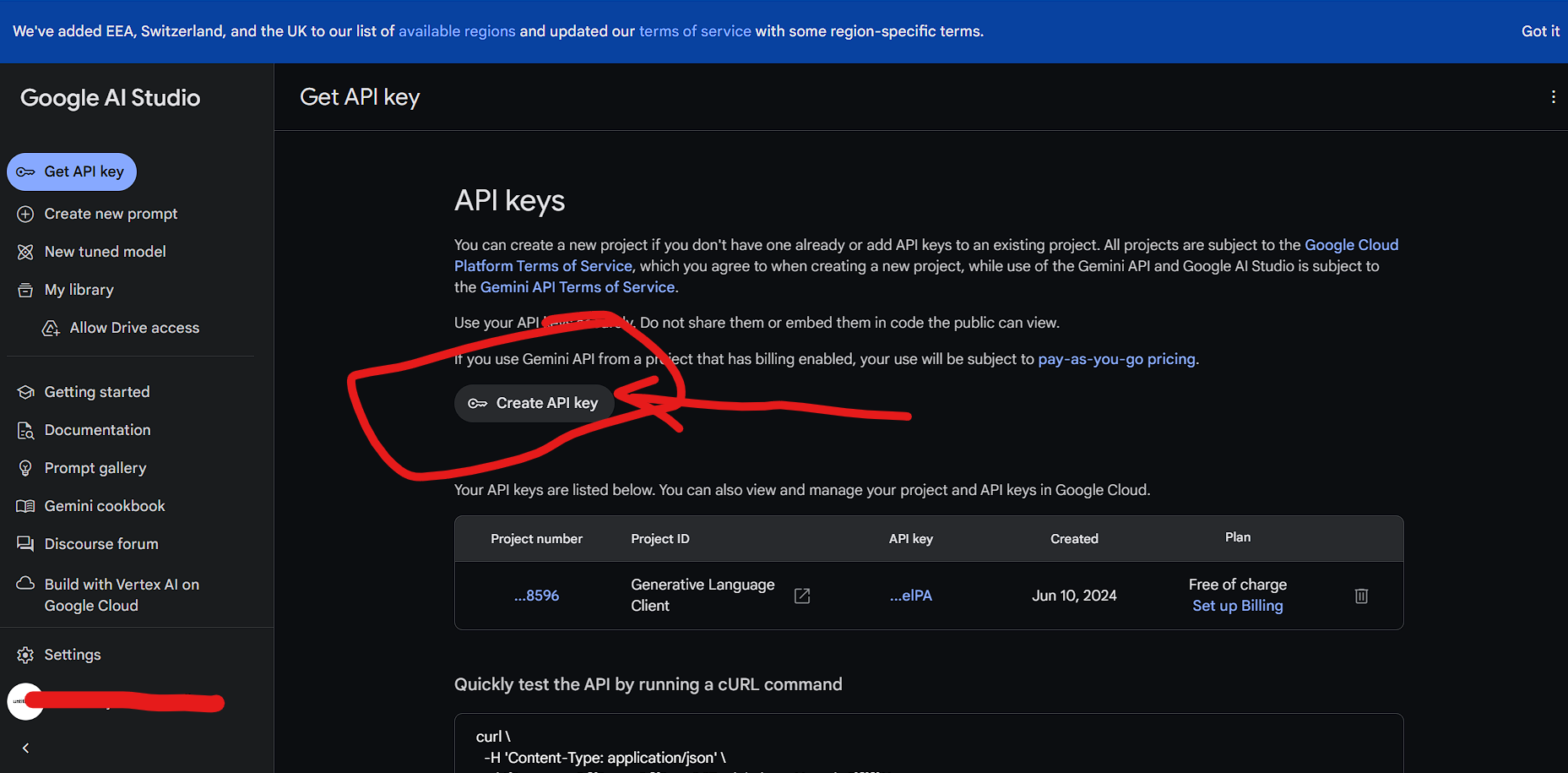Gemini Chatbot Code
Gemini Chatbot Code Documentation
This documentation provides an overview of a React-based chatbot application using the Gemini Language Model API. The chatbot interface allows users to type questions and receive generated responses.
Quick Preview
Imports
import { useState, useEffect } from "react"; import axios from "axios"; import ReactMarkdown from "react-markdown"; import { Input } from "@/components/ui/input"; import { Button } from "@/components/ui/button";
useStateanduseEffectare React hooks for state management and side effects.axiosis used for making HTTP requests.ReactMarkdownrenders markdown content.InputandButtonare custom UI components.
State Variables
const [question, setQuestion] = useState(""); const [messages, setMessages] = useState([]); const [generatingAnswer, setGeneratingAnswer] = useState(false);
question: Stores the current input question from the user.messages: Keeps track of the chat messages between the user and the bot.generatingAnswer: Indicates if the bot is currently generating an answer.
useEffect Hooks
Load Messages from Local Storage
useEffect(() => { const savedMessages = JSON.parse(localStorage.getItem("chatMessages")) || []; setMessages(savedMessages); }, []);
- Loads previously saved messages from
localStoragewhen the component mounts.
Save Messages to Local Storage
useEffect(() => { localStorage.setItem("chatMessages", JSON.stringify(messages)); }, [messages]);
- Saves messages to
localStoragewhenever the messages state changes.
How to get Gemini API key?
At first go to here
It will look like the below image:
 Click to zoom
Click to zoom
Click on the Get an API Key as shown in the picture.
Then it will redirect you to another page as shown in below image:
 Click to zoom
Click to zoom
Click on Create API key and copy the given api Key then Paste it in .env file (Remember to rename .env.example file as .env)
NEXT_PUBLIC_API_GENERATIVE_LANGUAGE_CLIENT=XXXXXXXXXXXXXXXXXXXXXXXX
generateAnswer Function
async function generateAnswer(e) { setGeneratingAnswer(true); e.preventDefault(); const newMessage = { sender: "user", text: question }; setMessages((prev) => [...prev, newMessage]); setQuestion(""); try { const response = await axios({ url: `https://generativelanguage.googleapis.com/v1beta/models/gemini-pro:generateContent?key=${process.env.NEXT_PUBLIC_API_GENERATIVE_LANGUAGE_CLIENT}`, method: "post", data: { contents: [{ parts: [{ text: newMessage.text }] }], }, }); const botMessage = { sender: "bot", text: response.data.candidates[0].content.parts[0].text, }; setMessages((prev) => [...prev, botMessage]); } catch (error) { console.log(error); const errorMessage = { sender: "bot", text: "Sorry - Something went wrong. Please try again!", }; setMessages((prev) => [...prev, errorMessage]); } setGeneratingAnswer(false); }
- Handles the submission of a user's question.
- Prevents the default form submission behavior.
- Adds the user's question to the messages state.
- Sends the question to the Gemini API to get a response.
- Adds the bot's response to the messages state.
- Handles errors by logging them and displaying an error message.
- Disables the generating answer state when done.
JSX Structure
Main Container
<div className="flex items-center justify-center h-screen bg-gray-100 dark:bg-gray-900">
- Centers the chatbot vertically and horizontally on the screen with background color.
Chat Window
<div className="flex flex-col h-[90vh] max-w-md w-full bg-white dark:bg-gray-950 rounded-2xl shadow-lg overflow-hidden">
- Creates a vertical layout with defined height and width, and applies styles for the chat window.
Header
<header className="bg-gray-100 dark:bg-gray-900 px-4 py-3 flex items-center gap-3"> <svg xmlns="http://www.w3.org/2000/svg" viewBox="0 0 256 256" fill="currentColor" className="w-6 h-6" > <path d="M230.92 212c-15.23-26.33-38.7-45.21-66.09-54.16a72 72 0 1 0-73.66 0c-27.39 8.94-50.86 27.82-66.09 54.16a8 8 0 1 0 13.85 8c18.84-32.56 52.14-52 89.07-52s70.23 19.44 89.07 52a8 8 0 1 0 13.85-8ZM72 96a56 56 0 1 1 56 56 56.06 56.06 0 0 1-56-56Z"></path> </svg> <div className="text-lg font-medium">Chatbot</div> </header>
- Displays the chatbot header with a title and icon.
*Message List
<div className="flex-1 overflow-y-auto p-4 space-y-4"> {messages.map((msg, index) => ( <div key={index} className={`flex ${msg.sender === "user" ? "justify-end" : "justify-start"}`}> <div className={`${msg.sender === "user" ? "bg-blue-500 text-white" : "bg-gray-100 dark:bg-gray-800"} px-4 py-3 rounded-2xl max-w-xs`}> <ReactMarkdown>{msg.text}</ReactMarkdown> </div> </div> ))} </div>
- Displays the list of messages with conditional styling based on the sender (user or bot).
- Uses
ReactMarkdownto render message text.
Input Form
<form onSubmit={generateAnswer} className="flex items-center gap-2 p-4 bg-gray-100 dark:bg-gray-900"> <Input type="text" placeholder="Type your message..." className="flex-1 bg-transparent" value={question} onChange={(e) => setQuestion(e.target.value)} disabled={generatingAnswer} /> <Button type="submit" variant="ghost" size="icon" className="text-blue-500" disabled={generatingAnswer} > Send </Button> </form>
- Handles user input and form submission.
- Disables input and button while waiting for the bot's response.
- Uses Input and Button components with styles and interactivity.
Summary
This React component creates a chatbot interface that saves chat history to local storage and interacts with the Gemini Language Model API to generate responses to user questions. The component is structured with a header, message list, and input form, and includes error handling and state management for a responsive user experience.
Repo Link : Github
